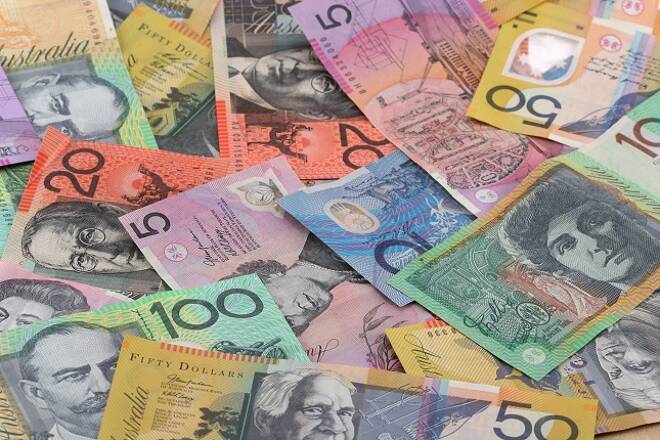Advertisement
Advertisement
Aussie Dollar Trades Higher Following Release of Tame RBA Minutes, Muted Response to Fresh U.S Tariffs on China
By:
The mild response by investors to the new tariffs suggests investors may be waiting to see which industries China decides to target in its retaliation. Again, the thought is, why sell the whole market when only a few sectors, industries or stocks may be negatively affected by China’s retaliatory efforts. The Australian Dollar is trading higher early Tuesday, bucking the negative tone set earlier in the session by new tariffs on China by the U.S. and relatively tame Reserve Bank of Australia monetary policy meeting minutes.
Asia stock markets are posting mixed results early Tuesday in response to an escalation in trade tensions between the United States and China. The reaction is more muted than previous reactions. This could be a sign that investors have accepted the possibility of a prolonged trade war and have learned to hedge away some of the risk.
Furthermore, President Trump opted to impose 10 percent tariffs instead of 25 percent tariffs initially on $200 billion worth of Chinese imports. However, if a deal isn’t made between now and the end of the year, these new tariffs will rise to 25 percent. Investors may have felt there is still some time to negotiate a settlement so it doesn’t make sense to panic sell at this time.
The White House also removed about 300 goods from a previously proposed list of affected products, including smart watches, some chemicals and other products such as bicycle helmets and high chairs.
Investors are now bracing for the retaliation from Beijing. There aren’t as many products China can place new tariffs on because the country doesn’t import many U.S. goods. Essentially, China is probably limited in its ability to impose similar tariffs in volume terms, but it can go after the supply chain which could have an effect on U.S. manufacturing.
The mild response by investors to the new tariffs suggests investors may be waiting to see which industries China decides to target in its retaliation. Again, the thought is, why sell the whole market when only a few sectors, industries or stocks may be negatively affected by China’s retaliatory efforts.
At 0411 GMT, Japan’s NIKKEI 225 Index is trading 23446.51, up 351.84 or +1.51%. Australia’s S&P/ASX 200 is at 6158.20, down 26.80 or -0.43% and China’s Shanghai Index is trading 2648.53, down 3.26 or -0.12%.
Forex News
The Australian Dollar is trading higher early Tuesday, bucking the negative tone set earlier in the session by new tariffs on China by the U.S. and relatively tame Reserve Bank of Australia monetary policy meeting minutes.
The minutes from the RBA’s September 4 monetary policy meeting provided no surprise for traders so the upward response we are seeing is likely being fueled by short-covering. In its minutes, the RBA reiterated that “the next move in the cash rate would more likely be an increase than a decrease.” However, “there was no strong case for a near-term adjustment in monetary policy.”
The central bank also highlighted that a few major central banks, led by the U.S. Federal Reserve, were expected to continue raising rates to prevent inflation from overheating.
The RBA also said the prospect of additional Fed rate hikes is making the U.S. Dollar a more desirable investment and that “raised risks” for some, especially for “fragile emerging” markets. However, “the modest depreciation of the Australian Dollar was helpful for domestic economic growth.”
Finally, the Reserve Bank also noted that there were “still significant tensions around global trade policy” that represented a “material risk” to the global outlook.
About the Author
James Hyerczykauthor
James Hyerczyk is a U.S. based seasoned technical analyst and educator with over 40 years of experience in market analysis and trading, specializing in chart patterns and price movement. He is the author of two books on technical analysis and has a background in both futures and stock markets.
Did you find this article useful?
Latest news and analysis
Advertisement
